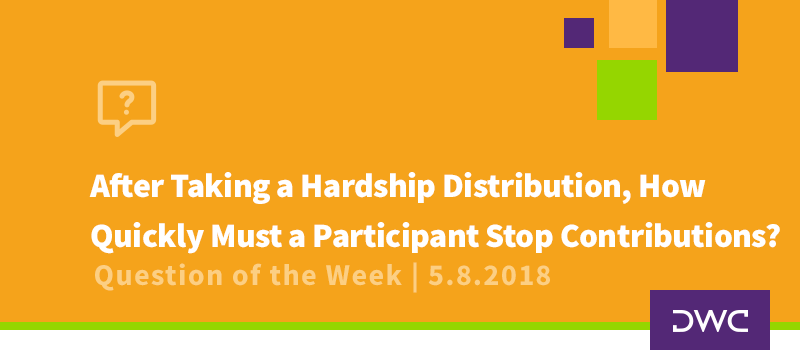
How Can We Tweak Our Plan's Eligibility Requirements to Make Administration Easier?
Facts
We’ve sponsored our 401(k) plan for several years now, and it’s been very well-received by our employees. Believe it or not, though, one of the biggest challenges we have had is around when employees become eligible. Some of our staff are salaried, while others are hourly. We have both part-time and full-time employees, and we are also trying to coordinate eligibility for the 401(k) plan with eligibility for some of our other benefits. Add all of that up, and it can be a challenge to properly manage this aspect of our plan, especially since we don’t have a dedicated HR department.
Question
Is there a way to have a plan that’s truly “no fuss, no muss” when it comes to eligibility?
Answer
You are certainly not alone when it comes to facing challenges around plan eligibility. In addition to the factors you mentioned, there is also the fact that eligibility usually consists of several components:
- Age Requirement: How old must an employee be?
- Service Requirement: How long must an employee work for you? Is this simply the passage of time or must they also work a minimum number of hours?
- Entry Date: After meeting the above requirements, when does the employee actually join the plan?
We cover each of those components in a little more detail here.
The service requirement is the one that can get the most confusing. Let an employee enter the plan early, and it may mean a corrective amendment or refund. If an employee’s entry date is erroneously delayed, that can mean a missed deferral opportunity correction. Though both scenarios are fixable, they are also both headaches you just don’t want.
The good news is that there are several ways you can tweak your plan’s eligibility provisions to make life a bit easier. We will touch on one of them here and address a couple others in a future Question of the Week.
One common source of consternation can come when defining your plan’s service requirement using a specific number of days. Assume a plan has a service requirement of 60 days. That means a new hire must work for you for 60 days to before joining the plan. While that may seem easy enough on the surface, it’s important to consider how things like having a different number of days in each month (not to mention a leap year) can easily throw-off this count.
Let’s take a look at an example to illustrate and suggest how to tweak it to save some hassle. Frank is a new employee hired on February 2, 2020. Since 2020 is a leap year, that extra day in February means Frank satisfied the 60-day requirement on April 1, 2020. What if Frank’s hire date is in 2019 or 2021 instead? That means he would satisfy the service requirement on April 2nd instead of the 1st. While there is only one day difference, what happens if entry for the plan is quarterly? This single day difference means Frank enters the plan on April 1st in a leap year but not until July 1st in other years. So, being off by a single day on the service requirement translates to being off by three full months when it comes to actually joining the plan.
Even in non-leap years, the fact that a month may have 28, 30, or 31 days can lead to similar results, and the possibility for missteps only increases as the service requirement increases as the determination crosses more months. And if the miscount occurs later in the year such that it changes the plan entry date from December 1st to January 1st (or vice versa), that could result in year-end testing improperly including or excluding that individual.
It’s probably easy enough, albeit a bit tedious, to just be really careful in keeping track of the days if we’re only talking about one new hire. But, if you have multiple employees coming on board and given that this isn’t the only thing you and your staff have to think about, the potential for error goes up more than a smidge.
An easy solution (and one that will likely go completely unnoticed by your employees) is to amend the plan document to define service in terms of months rather than days. Changing a 60-day requirement to two months (or 90 days to three months, etc.) that makes tracking eligibility and service easier for all involved. Going back to our friend Frank, he completes two months of service on April 1st regardless of which year he is hired,
Easier tracking, less chance for error, and no negative PR with employees? Seems like a win for everyone!
While any time is a good time to consider changing provisions that cause you angst, the upcoming IRS-mandated plan document restatement presents a great opportunity to review plan document provisions as well as actual plan operations to ensure they not only align but make the most administrative sense for your plan and business. Want to take a deep dive into your plan to see how some tweaks may save you some time and hassle? We’d be glad to take that call, so don’t hesitate to reach to your DWC team!
For additional information on plan eligibility, check out our Knowledge Center here.
Want a printable version of this article? Click here.


















